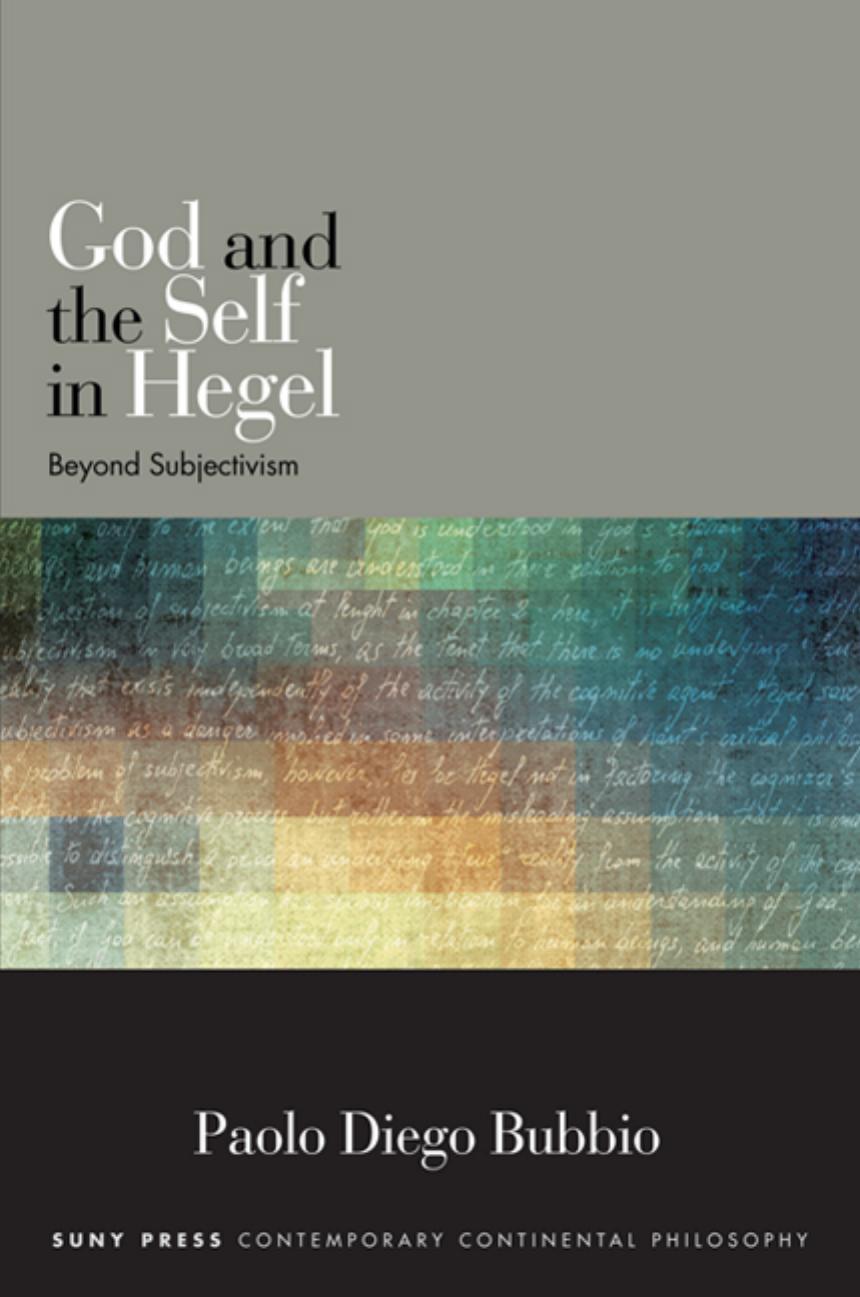God and the Self in Hegel by Paolo Diego Bubbio

Author:Paolo Diego Bubbio [Bubbio, Paolo Diego]
Language: eng
Format: epub, pdf
ISBN: 9781438465258
Publisher: State University of New York Press
Published: 2017-01-15T07:00:00+00:00
Hegel’s Trinity
Hegel is adamant regarding his view of the centrality of the trinitarian doctrine within Christianity. In this context, the target of his polemical attacks was not only Schleiermacher, who had described the Trinity as an “appended proposition” to Christianity, but also those “pious theologians” (Rel I, 68/157n17) who regarded the Trinity as a mere historical product and traced its origins back to late Greek philosophy and Neoplatonism and, on this ground, dismissed it as a “decorative timbering.”28 Hegel is willing to concede that, as a human-developed historical product, the notion of the Trinity entered Christianity through external cultural influences, and especially through the Neoplatonic tradition. However, stopping at this claim would, in Hegel’s view, miss the point. Hegel thinks that religious representations can find their sublation (Aufhebung) in the conceptual language of philosophy. But, insofar as they are representations, they are inseparable from the cultural history that has produced them. Therefore, it is “immaterial where that doctrine came from,” Hegel claims, and he continues: “The question is solely whether it is true [wahr] in and for itself” (Rel I, 68/157n17). In this regard, one must remember that Hegel thinks that the traditional (Aristotelian) correspondence theory does not exhaust a comprehensive theory of truth; for Hegel, truth (Wahrheit) is, first and foremost, “the agreement of a content with itself [Übereinstimmung eines Inhalts mit sich selbst]” (E I, 8:86/62).29 Therefore, the question is whether the religious representation of the Trinity is consistent with the concept of God. To answer this question, Hegel’s dialectical method requires an “unpacking” of the notion. The dialectical method, rather than being simply “applied” to an inquiry, gives “form” to the subject matter; in other words, that “unpacking,” which clarifies the internal and external connections of a notion or representation, permits the “truth” of the Trinity to be discovered.
The standard Christian doctrine of the Trinity defines God as three divine persons, distinct but coexisting in unity: God the Father, the Son, and the Holy Spirit. Hegel clarifies that, taken literally, this description of the Trinity is a “childlike” (kindlich; Rel I, 43/126 and Rel III, 127/194) and imaginative (bildlich; Rel III, 209/284) expression. Here, Hegel distances himself from the traditional doctrine of the Trinity and expresses a dislike for the emphasis on the representation of three “persons.” For Hegel, “we must be aware that all three are spirit” (Rel III, 128/195), an awareness that should help us to develop a more appropriate understanding of the Trinity as represented by a unity, that is, a unique “personhood,”30 which expresses itself in a range of relationships—those relationships traditionally expressed by the inadequate images of Father, Son, and Spirit.
To explore this range of relationships, it is useful to employ a distinction that is traditional in trinitarian theology but that is not explicitly mentioned by Hegel, yet it seems to be implied in his analysis: that between immanent and economic Trinity.31 The immanent Trinity is the pre-worldly Trinity, that is, the idea of God prior to the creation of the world—“the show of finitude,” Hegel remarks, “has not yet taken place” (Rel III, 16/77–78).
Download
God and the Self in Hegel by Paolo Diego Bubbio.pdf
This site does not store any files on its server. We only index and link to content provided by other sites. Please contact the content providers to delete copyright contents if any and email us, we'll remove relevant links or contents immediately.
The remains of the day by Kazuo Ishiguro(8897)
Tools of Titans by Timothy Ferriss(8311)
Giovanni's Room by James Baldwin(7258)
The Black Swan by Nassim Nicholas Taleb(7064)
Inner Engineering: A Yogi's Guide to Joy by Sadhguru(6758)
The Way of Zen by Alan W. Watts(6558)
Asking the Right Questions: A Guide to Critical Thinking by M. Neil Browne & Stuart M. Keeley(5712)
The Power of Now: A Guide to Spiritual Enlightenment by Eckhart Tolle(5683)
The Six Wives Of Henry VIII (WOMEN IN HISTORY) by Fraser Antonia(5459)
Astrophysics for People in a Hurry by Neil DeGrasse Tyson(5153)
Housekeeping by Marilynne Robinson(4400)
12 Rules for Life by Jordan B. Peterson(4278)
Double Down (Diary of a Wimpy Kid Book 11) by Jeff Kinney(4245)
The Ethical Slut by Janet W. Hardy(4220)
Skin in the Game by Nassim Nicholas Taleb(4208)
Ikigai by Héctor García & Francesc Miralles(4177)
The Art of Happiness by The Dalai Lama(4099)
Skin in the Game: Hidden Asymmetries in Daily Life by Nassim Nicholas Taleb(3964)
Walking by Henry David Thoreau(3926)
